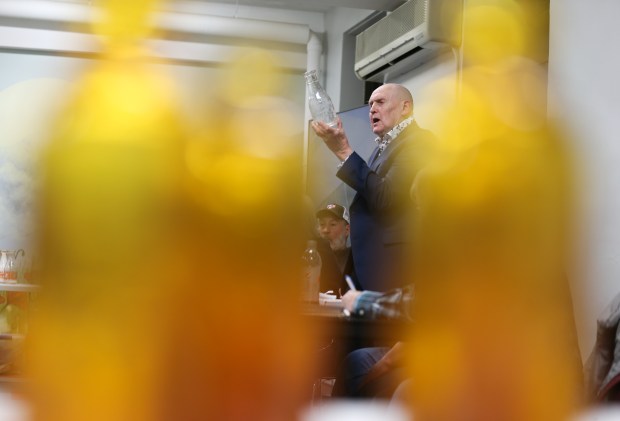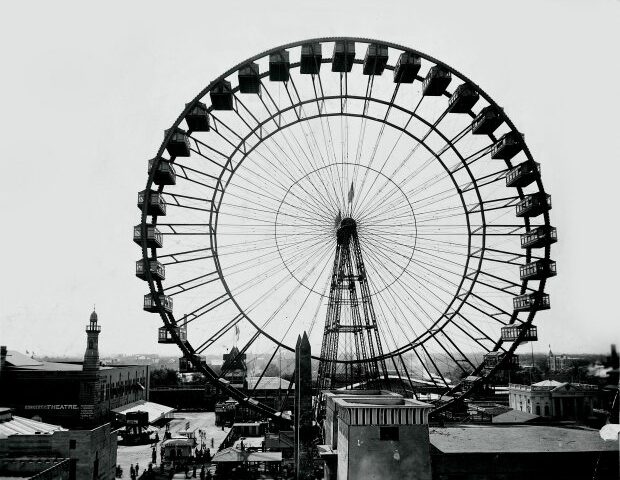The group assembled in the church basement on a recent Friday night was awash with gray hair, flannels and trucker hats. They sat scattered between two rows of chairs, with bags of clinking glass in tow. Each held a personal treasure: antique bottles.
Then, a newcomer walked in. He was 12 years old.
John Panek, 82, bounded across the room, bursting with excitement. “We’re going to draft you, young man,” he told Bronson Welch, a middle schooler.
It’s not often new visitors come to meetings of the 1st Chicago Bottle Club. Even rarer when they’re under 65.
“All my friends in the hobby are dying out,” said Panek, the club’s president. “We need new blood.”
The club, founded in 1969, is a fragment of a little-known antique collector community across the U.S. Around a dozen bottle buffs attend the group’s monthly gatherings in the basement of a Hinsdale church. It’s not exactly a youthful endeavor — but the joy of discovery seems to keep the fading pastime alive.
There are more than 70 bottle-collecting clubs across the country, with one in nearly every state, according to the Federation of Historical Bottle Collectors. Every year, hundreds gather at the federation’s annual summer bottle show for auctions, exhibitions and contests.
In Hinsdale, glass containers of nearly every shape and size dotted the room, from wine bottles to whiskey flasks to pickle jars. Most date back to the 19th and early 20th centuries. Their rich pigments created a rainbow of deep ambers and cobalt blues.
“Color reigns supreme in the bottle world,” Panek declared, a notion he emphasized several times over the three-hour meeting.
These days, it’s easy to scrounge for bottles on sites such as eBay or at antique stores. But the purists will insist upon unearthing their collection themselves.
In the 1970s and 80s, the club coordinated trips to dumps, construction sites and mudflats. Hours would pass digging at the abandoned Riverview Amusement Park, or the dredged banks of the Lincoln Park Lagoon. Hundreds of historic bottles emerged from the ground.
It’s all in the club’s official motto: “We’re happiest when we’re down in the dumps” (and yes, they have T-shirts).
“Just hunting them and digging through, there’s something special about it,” said member Frank Bradbury, 77. “I can’t really explain it.”
It’s now difficult to dig at landfills due to increased security and liability concerns. Panek once donned a hard hat and neon vest to dig at a fenced-in lot below the Dan Ryan Expressway.
“If someone came by, they would say, ‘Oh, there’s a worker there, but he’s got a hard hat on, so we’re not gonna bother him,’” he said with a laugh.
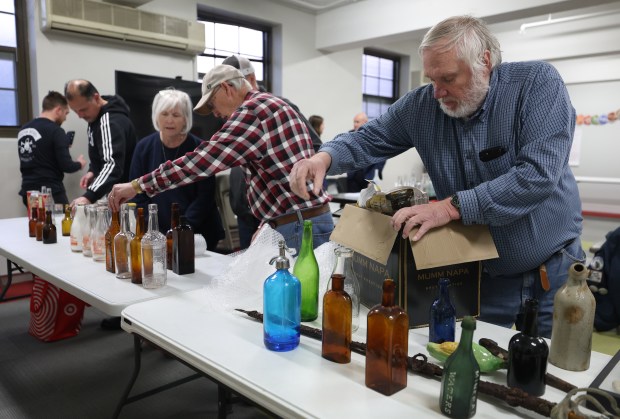
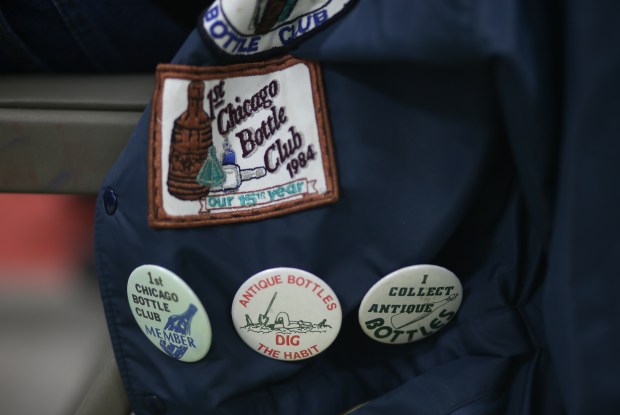
Bronson, too, has become an amateur archaeologist. He was recently featured in the village’s weekly newspaper, The Hinsdalean, after he discovered dozens of historic bottles buried in Salt Creek. The club’s secretary, Craig Wright, invited him to join after reading the article.
“I was just walking through the creek with my boots, and I saw this and thought it was cool,” Bronson said, holding a painted Hi-Q soda bottle.
He listened eagerly during the club’s show-and-tell section before presenting his bottle, describing its faded painted label.
“I had never seen anything like it,” Bronson told the club.
Later, Tom Majewski lumbered to the folding table to present. He had adorned it with an assortment of oddities: A rusted wooden pistol. A painted ceramic doll head. A skull-carved pipe. And about a dozen weathered glass bottles.
The 76-year-old picked up a slightly discolored, translucent bottle and held it up before the small crowd. Its slender neck was melted to one side.
“I like this one because it doesn’t stand up straight,” Majewski said, slamming it back on the table to demonstrate. “Like me,” he added as it wobbled.
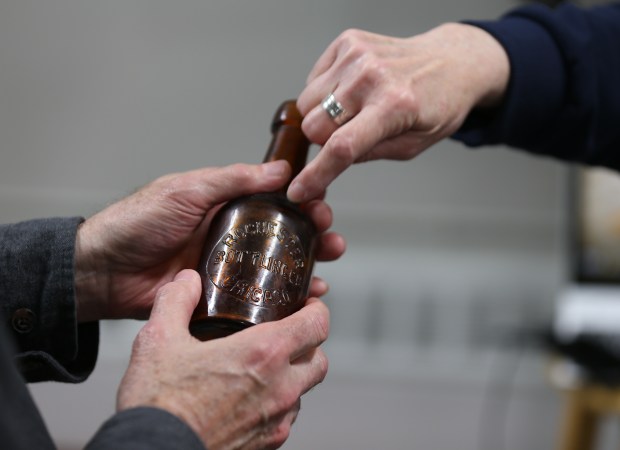
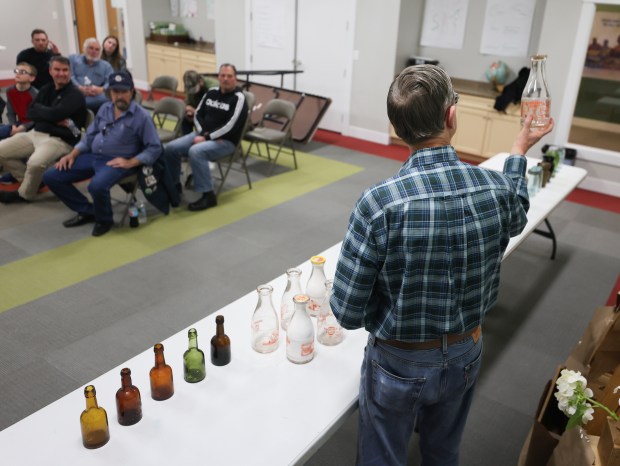
Majewski is a privy digger. He scouts historic homes in Naperville, looking for large, sloping yards that may have been the site of outhouses. There, bottles and other trinkets were thrown into the ground hundreds of years ago.
“I just love old stuff,” Majewski said. , He’s accumulated nearly 1,000 Chicago pharmacy bottles over the past four decades. “My house has exploded.”
He has carefully excavated more than 320 Naperville privies, including one at a home once visited by President Abraham Lincoln. He usually finds more than just bottles, which is why he has a collection of ceramic doll heads.
“When my dad asks permission to dig, people think that he charges for it,” said his son, Michael Majewski, 44. “But this is his day at the golf course.”
Bottles are often the gateway to other collectibles. Bradbury scavenges for Civil War-era antiques with a metal detector. Panek has more than 100,000 postcards dating back to the 1850s.
“I’m one of the oddballs who doesn’t collect anything else,” said member Roy Komorowski, 69. “I’m too old to have a collection like these guys have. They’re more like accumulators. So, I’ve narrowed it down to a few hundred bottles, and that’s it.”
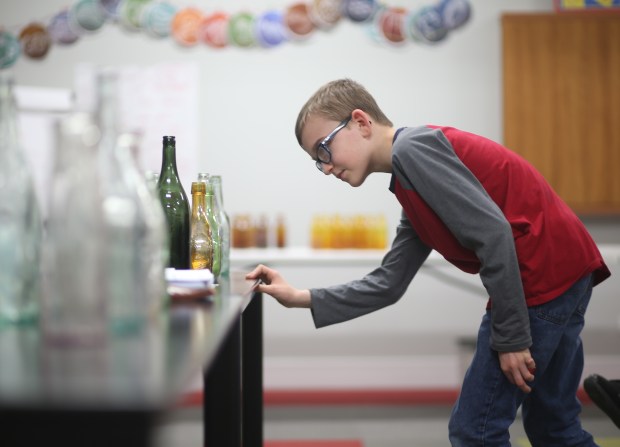
At the meeting’s auction, Bronson’s mom gave him $4 to buy another embossed container. Soon, he was clutching two cardboard boxes stuffed with bottles.
Panek was elated.
“You can imagine him in the river digging bottles, getting so excited,” the president said. “It’s what I did in the 70s.”
Still, sometimes, it’s difficult for Panek to envision a future for his beloved club. Unlike bottles, its members won’t stand the test of time. Many are battling health issues and other side effects of aging. Panek’s own wife, who also sits on the club’s board, is set to begin kidney dialysis.
He’s holding out hope.
“We’ve had a renaissance of younger members,” Panek said, looking toward Bronson. “People will always love bottles.”
Meanwhile, Tom Majewski chatted with his son and other members about the recent Chicago Bears stadium proposal.
“When they build that new stadium, we get all that virgin ground,” he said, a gleam in his eyes.
It was probably a joke. Probably.


